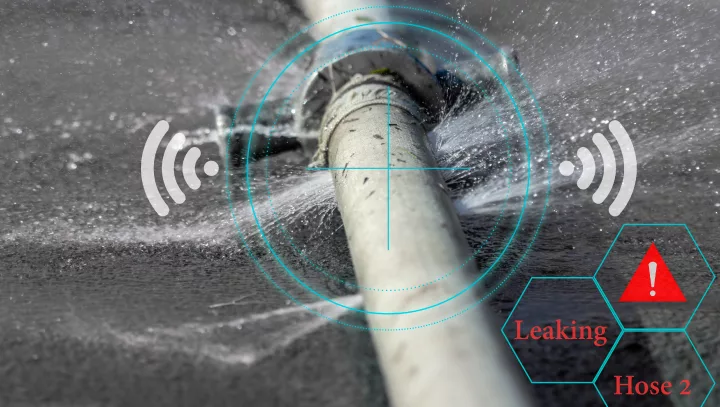Water Leak Detection: How to Identify and Repair Leaks Before They Cause Damages
Water Leak Detection: How to Identify and Repair Leaks Before They Cause Damages
Blog Article
Ingenious Solutions for Early Discovery of Water Leaks in Structures and Infrastructure
As the honesty of buildings and framework is vital, the obstacle of very early detection of water leakages has spurred cutting-edge options that promise to reinvent the means we protect versus potential problems. From cutting-edge leak discovery technologies to the implementation of IoT sensing units for real-time tracking, the landscape of leakage prevention is developing swiftly. Device discovering algorithms provide a peek right into the future of leak prediction, while thermal imaging provides a non-intrusive technique for pinpointing surprise leaks. Automated water flow evaluation systems are improving how leaks are determined and addressed, leading the way for an aggressive approach to water leak detection. Each of these options holds the vital to ensuring the dependability and durability of our constructed setting, prompting a shift towards a much more sustainable and effective future.
Advanced Leak Detection Technologies
Advanced leakage detection technologies, furnished with advanced sensing units and formulas, play an important duty in quickly identifying and identifying water leaks in different settings. Electro-magnetic sensors can determine changes in electro-magnetic fields created by water, providing yet an additional layer of leakage detection ability.

IoT Sensors for Real-Time Surveillance
In the world of modern water leak detection, the combination of IoT sensing units for real-time monitoring represents an essential innovation in boosting proactive leak detection abilities. These sensing units supply continuous monitoring of water systems, offering real-time information on water circulation prices, stress variants, and temperature level adjustments. By leveraging IoT technology, these sensors can spot even the smallest anomalies in water usage patterns, allowing early identification of prospective leaks before they intensify into significant problems.
IoT sensing units send information to a central platform, where sophisticated algorithms examine the info and produce notifies or notifications when irregularities are spotted. This real-time monitoring capability permits homeowner or facility supervisors to quickly resolve leakages, decreasing water damage, decreasing repair work prices, and conserving water sources.
In addition, IoT sensing units can be integrated with building monitoring systems, enabling automatic responses to detected leakages, such as turning off water valves or turning on pumps to reduce the impact of leakages. Generally, the application of IoT sensing units for real-time tracking considerably enhances the effectiveness and effectiveness of water leakage detection in structures and facilities.
Machine Understanding Algorithms for Leak Forecast

One key benefit of utilizing device learning for leakage prediction is its ability to continually discover and improve its precision in time. As even more information is collected and fed right into the algorithm, it can refine its forecasts and adapt to transforming problems, ultimately raising the integrity of leak discovery systems.
Furthermore, machine understanding algorithms can aid in determining subtle indications of leaks that might go unnoticed by standard monitoring approaches. water leak detection. By evaluating intricate data embed in real-time, these formulas can offer very early warnings and informs, permitting timely intervention and precautionary upkeep to reduce possible water damages and associated expenses
Utilizing Thermal Imaging for Leakage Discovery
Thermal imaging modern technology offers a promising method for finding water leakages in numerous systems and frameworks. By utilizing infrared radiation and temperature variations, thermal imaging cams can determine concealed leakages that are not quickly visible to the naked eye.
One of the essential advantages of thermal imaging for leak discovery is its non-intrusive nature. Unlike conventional techniques that may require getting into wall surfaces or floorings to situate leakages, thermal imaging permits non-destructive testing. This not only conserves time and lowers prices however likewise reduces interruption to the building or framework being analyzed. In addition, thermal imaging can swiftly scan large locations, supplying a detailed summary of potential leakage resources in a timely manner. On the whole, using thermal imaging innovation enhances the performance and precision of water leak detection, making it a beneficial device for maintaining the honesty of structures and facilities.
Automated Water Circulation Analysis Systems
Just how can automatic water circulation analysis systems change the discovery and management of leakages in various systems and frameworks? Automated water flow evaluation systems use a positive approach to leak discovery by constantly monitoring water circulation prices and patterns. By establishing standard data, these systems can swiftly identify variances that might indicate a leak, making it possible for timely treatment to prevent considerable damage.
These systems use innovative Visit Your URL formulas to evaluate real-time information and offer instant alerts when anomalies are identified, permitting speedy activity to be taken. Additionally, computerized water flow analysis systems can be incorporated with structure monitoring systems or IoT look at this web-site platforms, improving general performance and enabling remote monitoring abilities.
In addition, the information accumulated by these systems can be made use of for anticipating upkeep functions, assisting to determine prospective weak points in the infrastructure before leaks take place. On the whole, the execution of computerized water circulation analysis systems can substantially enhance leak detection and monitoring techniques, eventually resulting in cost savings, reduced water waste, and enhanced sustainability in buildings and framework.

Verdict
Finally, the integration of advanced leak detection innovations, IoT sensing units, maker understanding formulas, thermal imaging, and computerized water circulation evaluation systems supplies cutting-edge solutions like this for early discovery of water leakages in structures and framework. These modern technologies make it possible for real-time surveillance, forecast of leakages, and effective detection techniques to avoid water damage and wastage. Implementing these solutions can help in keeping the honesty and sustainability of water supply in different settings.
Report this page